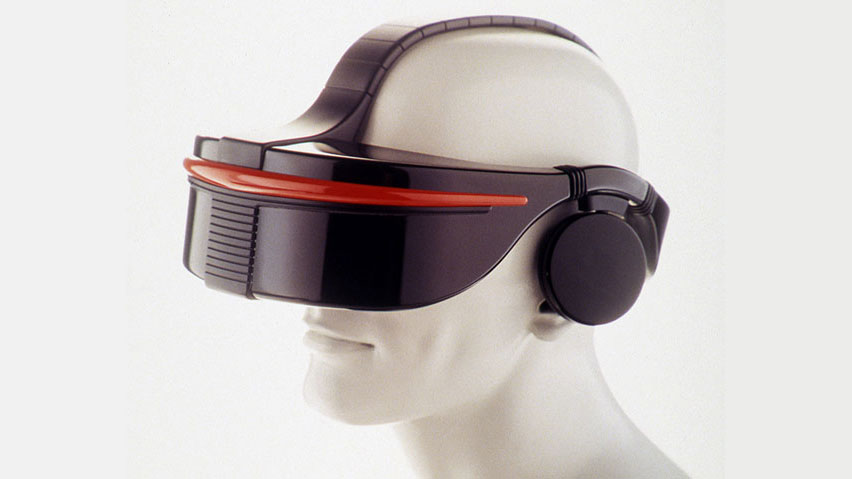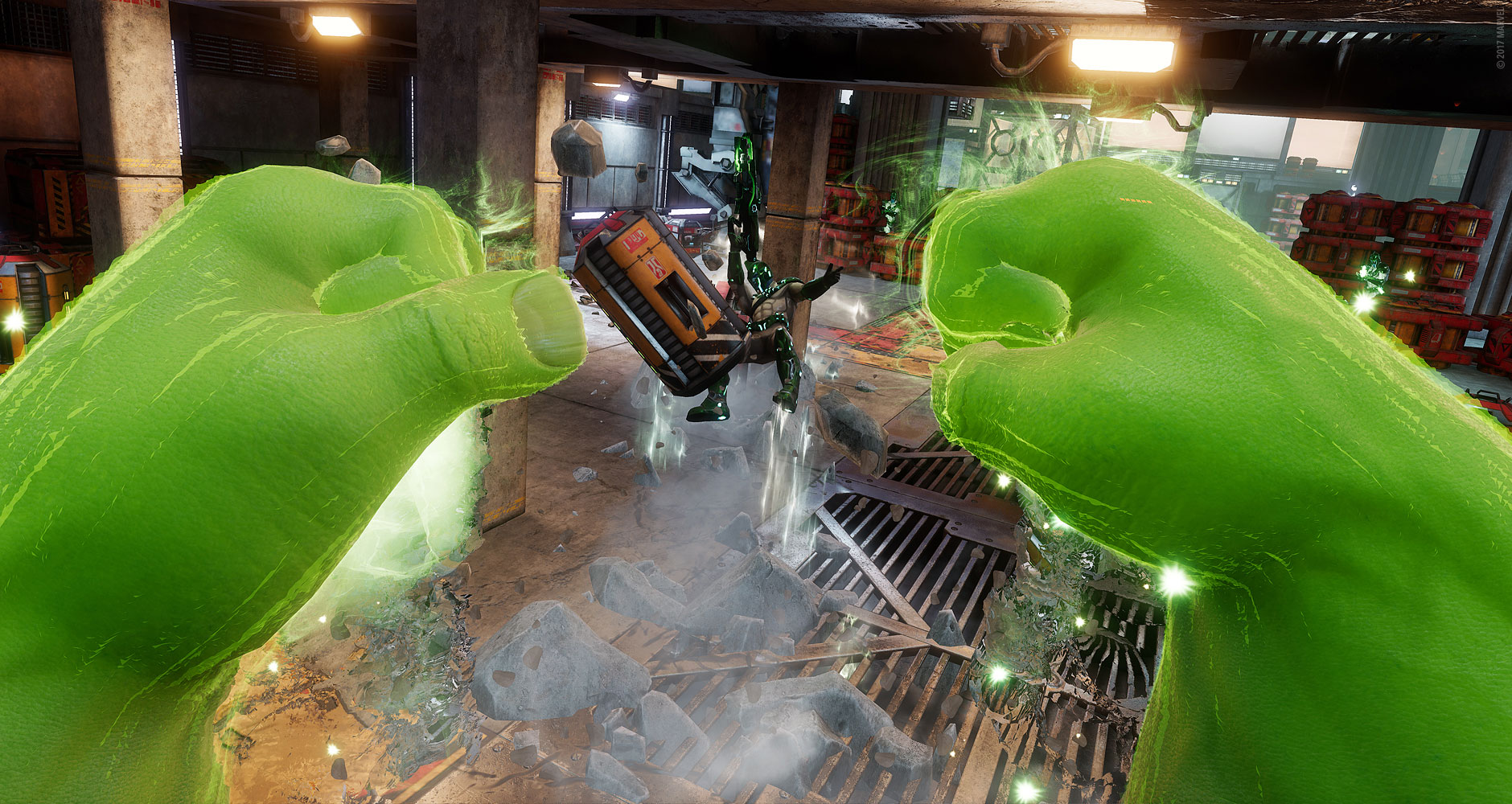2017 is the year VR went from gimmick to game-changer
Turn on, strap in, space out

Virtual reality is geeky, there’s no two ways about it. The VR headset strapped to a pasty white twenty-something is lazy shorthand for ‘geek’ in adverts all over the world right now. But the emerging technology is starting to make waves in the mainstream, and for good reason: it's incredible.
To misquote Thomas Aquinas: “For those who have tried VR, no explanation is necessary, for those who have not, none will suffice.”
We’re currently in the middle of what’s being described as the ‘second wave’ of virtual reality. In the late 80s and early 90s there were some truly terrible headsets that you strapped to your face, where you pretty much stared straight into a single oscillating pixel as it attempted to bore into your soul. That was the first wave.

More recently, the technology has made some significant bounds forward and with releases of high-end headsets like the HTC Vive and Oculus Rift, and cheap, accessible headsets that use smartphones as the screen like Samsung’s GearVR and Google Cardboard.
But the main thing that’s going to make a difference for mainstream adoption is going to be good content, and this is where 2017 really started making a difference.
In this piece, we’re going to be looking at some of the great content that 2017 offered up, the improvements we want to see from VR in 2018, and the headsets that are coming out.
Lone Echo
There are loads of VR experiences out there now, and most of them are terrible. To be fair to the developers, they are starting from scratch on a totally new format, so VR experiences not being as good as AAA video games or Hollywood blockbusters really isn’t surprising, but if you’re going to fork out the hundreds that a top-of-the-range headset costs, you really want content that makes the investment worth it.
Sign up for breaking news, reviews, opinion, top tech deals, and more.
The real first of this kind is Lone Echo. You’re an AI called Jack, housed in a robot body, on a spaceship floating through space. That’s already three things on the wish fulfillment tick list ticked off so we’re off to a good start.
And this is a thing that VR does brilliantly. It doesn’t just show you a world that you can’t see in reality, it actually puts you in it. A common feeling that people have from using VR is that the memory of the experience feels like a true memory of doing that thing. And that was our own Gerald Lynch’s experience when playing Lone Echo.

What really helps Lone Echo is that it solves the problem of motion in a very clever way. For most VR experiences you have to use controllers to move yourself around the space or ‘jump’ using buttons, which leads to a disconnect between your physical and virtual bodies, causing some pretty savage motion sickness.
In Lone Echo, you move the way you really would in space; you grab your surroundings and push, launching yourself through the vessel. It allows you to feel truly weightless which is remarkable as you still keep your feet solidly on the floor.
It started as an Oculus Rift exclusive, but is now available for both the Rift and the HTC Vive. It isn’t available on the cheaper headsets, but that’s because it requires some serious computational power.
Hulk SMAAASH
One of the big things getting pushed in VR at the moment is the ‘communal’ nature of it. With Facebook (and many others) creating experiences where you can hang out with others across the world around a digital campfire or its like, but the main problem is that you’re interacting with a digital avatar which just isn’t as good as a video call.
it could potentially be better if there was a direct video feed of the person, but then you’d be encouraging people to look at you with a VR headset on, which none of us are keen to do.

One solution is, rather than trying to pretend that we’re all just hangin’ out like a group of pals, you make it a collaborative game where you all get to be superheroes. One of you gets to be Hulk. Another Deadpool. Another Rocket Raccoon. Who wouldn’t want that? Idiots. That’s who.
Watching Hulk on the big screen picking up henchmen and tossing them through the air is fun, but actually grabbing their puny heads in your gargantuan hands and watching their tiny bodies flail as you smash them into the floor is indescribably wonderful.
This isn’t some wonderful dream; this is Marvel Powers, a Marvel game that is currently an Oculus Rift exclusive, but may well be coming to HTC Vive at some point in the future. Don’t get us wrong, the game isn’t perfect, but as a communal VR experience, it’s one of our favorites so far.
This is the Void you're looking for
Continuing the theme of communal VR experiences, one of the areas that shows the greatest potential with virtual reality is the VR arcade. 2017 was the year that introduced Mario Karting on an actual Kart simulator in VR (which we’re frankly desperate to try, but we can’t afford the ticket to Japan), but that wasn’t the only arcade experience available.
We went to try out The Void’s Star Wars experience, Secrets of the Empire, in London’s Westfield shopping mall, and were seriously impressed. When you get to actually move around in a physical space that matches the virtual one, you feel as though you’ve been transported to a different world.

In it, you play as a rebellion soldier dressed as a Stormtrooper, breaking in to Darth Vader’s fort on the lava planet Mustafar. There’s something incredibly thrilling about a blast of hot air hitting you as you turn towards a stream of lava.
And this is the thing about VR - it only really engages a couple of your senses, so any technique that engages more of your body and truly immerses you is welcome.
Lets get physical
Well, we say any, but we've seen some absolutely ludicrous VR accessories, including a Kickstarter for a device that straps to your headset and blows wind onto your cheeks so that you feel as though you're really flying through the air, or an arrow is whizzing past your cheek.
This is gimmickry at its very highest, but there is something hilarious about it.
In 2017 we also tried the Birdly machine, a device that you strap your body into so that you can control your flight through a city by flapping your featherless human limbs, strapped prone with a VR headset on, while surrounded by onlookers. Dignified it isn’t.

But not all the accessories are so ridiculous. Sony's Aim controller for PlayStation VR is actually a pleasure to use. That's nice because otherwise you’re using the Move controllers, which are pretty outdated.
With the Aim, you have an actual tangible gun you can hold in your hands that makes using a virtual weapon feel much more real.
It came out in 2016, but there were pretty much no games for it at the time. There are still only a few, but there will only be more coming in 2018, and to be honest, it hasn’t slowed down the rate at which people have been buying the PSVR.
Cheap headsets
In 2017, PSVR was the VR headset that shipped more than any other, selling over two million units. While we don’t have exact figures for the industry’s highest quality headsets HTC Vive or Oculus Rift, estimates are that PSVR is in the lead by quite a margin.

This is thought to be because both the big players started out with a very high price tag, so the PSVR managed to have a fidelity and form-factor that was better than the smartphone-powered Google Cardboard and Gear VR but without breaking the bank.
What’s interesting is that now HTC and Oculus are bringing out cheaper, wireless headsets. HTC's offering is called Vive Focus, and the one from Oculus is the Oculus Go. Both offer totally standalone VR experiences, and are aiming for the average consumer rather than the early adopter.
The virtual Catch-22
Early adopters are often lumbered with being the testing ground for a new technology. It has its benefits, but you end up in beta-hell a lot of the time.
What’s interesting about VR is that there’s no distribution model that can quickly grow an audience. More adopters are needed to create enough of an audience that it’s economically viable for content creators to invest in the medium. However, the audience won’t invest in the medium without content that makes doing so worthwhile.

Many parallels are (very fairly) being drawn with the early days of cinema when audiences (reputedly) fled from theatres in fear because they thought the train travelling towards them was actually going to crash into them.
Over the years, film-making has evolved, taking in the technologies of animation, special effects, and the many different types of narrative until we end up with the rich and varied film industry we have today.
Undoubtedly VR is a new medium, but the problem with the investment model was perfectly summed up by Raindance Film Festival founder Elliot Grove: “It’s a really exciting new medium that is much more like immersive theatre than it is film. But you can only admit one audience member at a time.”
And while the price of a ‘ticket’ isn’t a lot, having to buy an expensive piece of equipment in order to then buy a ticket is a massive hinderance.

What’s quite interesting is that the fidelity of even the top-of-the-range headsets isn’t good enough for major content producers to make full feature-length films (or whatever a VR film is going to be), the industry as a whole is moving towards cheaper, lower fidelity headsets.
VR’s kissing cousin AR is given the advantage of being able to live on smartphones, meaning that when Apple released ARKit, there were instantly millions of AR devices already in the hands of users.
There is an ongoing discussion about whether AR is going to be the death of VR, or whether there may be a device, like the Magic Leap, that ends up being able to amalgamate the two currently disparate mediums.
It feels very much like in two years time VR is going to be absolutely incredible. It just needs to find a way to survive until then. Watch this space.
- Want to get in on the action? Check out: The best VR headset 2017: which headset offers the best bang for your buck?

Andrew London is a writer at Velocity Partners. Prior to Velocity Partners, he was a staff writer at Future plc.